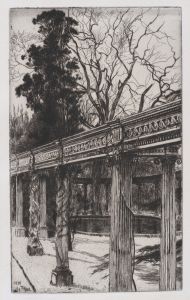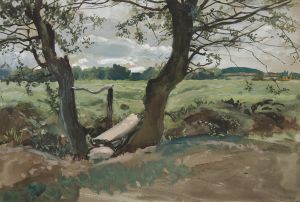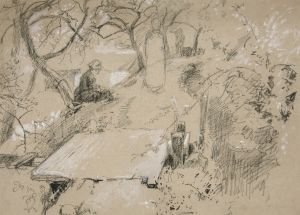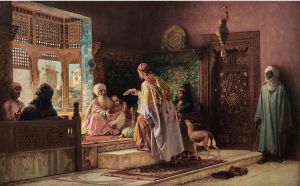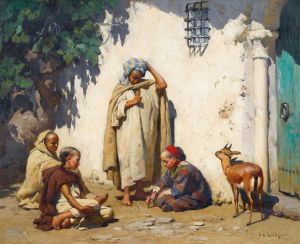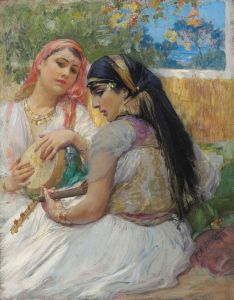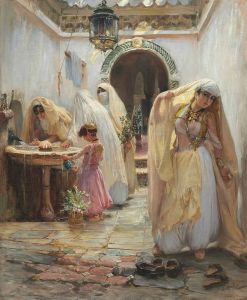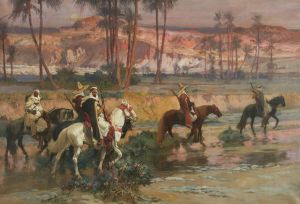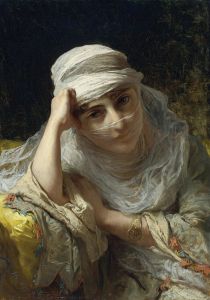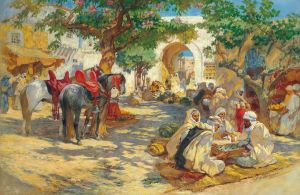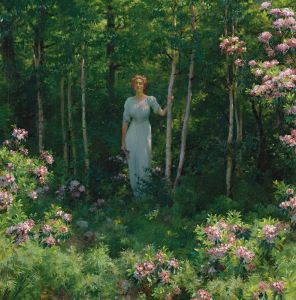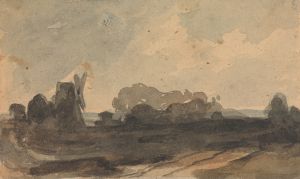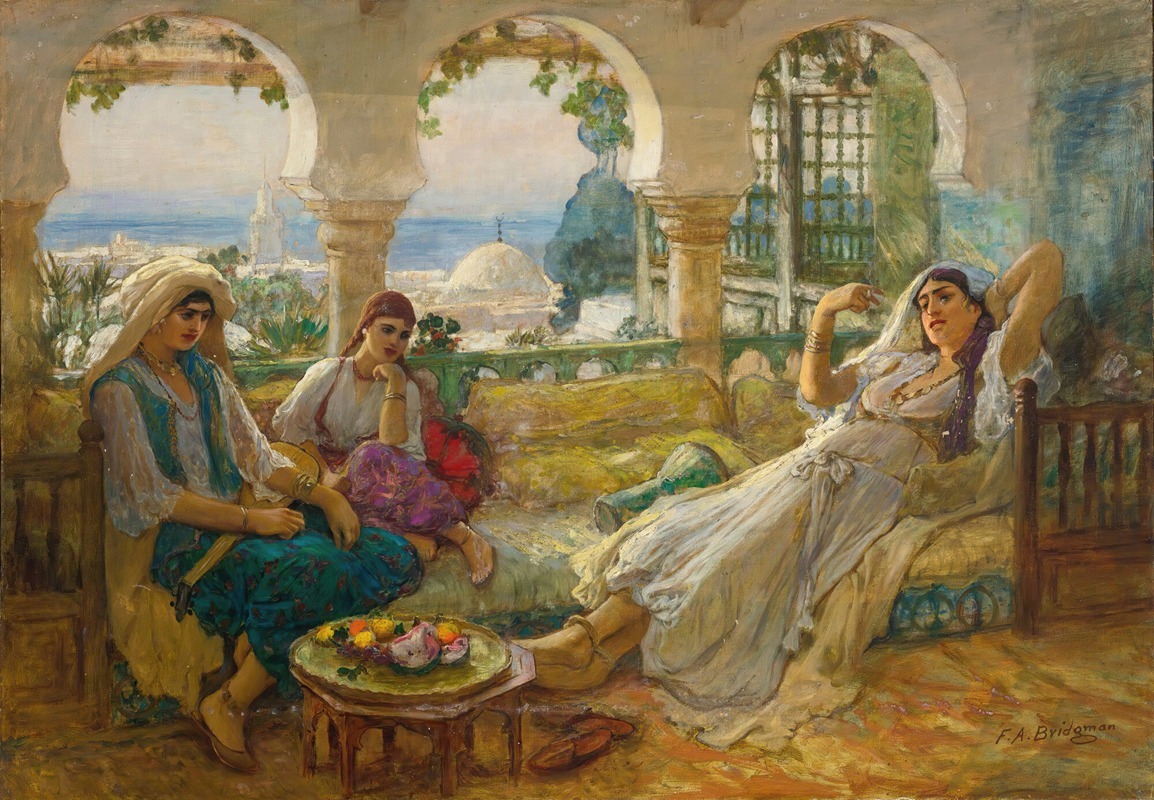
On The Terrace
A hand-painted replica of Frederick Arthur Bridgman’s masterpiece On The Terrace, meticulously crafted by professional artists to capture the true essence of the original. Each piece is created with museum-quality canvas and rare mineral pigments, carefully painted by experienced artists with delicate brushstrokes and rich, layered colors to perfectly recreate the texture of the original artwork. Unlike machine-printed reproductions, this hand-painted version brings the painting to life, infused with the artist’s emotions and skill in every stroke. Whether for personal collection or home decoration, it instantly elevates the artistic atmosphere of any space.
Frederick Arthur Bridgman was an American artist known for his detailed and vibrant depictions of Orientalist themes. Born in 1847 in Tuskegee, Alabama, Bridgman became one of the most celebrated American painters of the 19th century, particularly recognized for his works that capture the essence of North African and Middle Eastern life. His painting "On The Terrace" is a testament to his skill and interest in Orientalist subjects, although specific details about this particular painting are not extensively documented.
Bridgman began his artistic career in New York, working as an engraver before moving to Paris in 1866 to study at the École des Beaux-Arts under the tutelage of Jean-Léon Gérôme, a prominent French painter known for his Orientalist works. Bridgman's time in Paris and his travels to North Africa greatly influenced his artistic style and subject matter. He spent a significant amount of time in Egypt and Algeria, where he immersed himself in the local culture and landscapes, which became the primary focus of his paintings.
"On The Terrace" likely reflects Bridgman's fascination with the daily life and architecture of the regions he visited. His works often depict scenes of leisure and domesticity, capturing the intricate details of clothing, architecture, and the natural environment. Bridgman's paintings are characterized by their meticulous attention to detail, vibrant colors, and a sense of tranquility and timelessness.
While specific information about "On The Terrace" is limited, it can be inferred that the painting showcases Bridgman's typical style and thematic interests. His works often feature figures in traditional attire, set against the backdrop of ornate architectural elements such as terraces, courtyards, and gardens. These settings provide a glimpse into the private and public lives of the people he observed during his travels.
Bridgman's paintings were well-received during his lifetime, and he exhibited regularly at the Paris Salon and other prestigious venues. His ability to capture the exotic allure of the Orient appealed to the Western audience's fascination with distant lands and cultures. Bridgman's work contributed to the broader Orientalist movement, which sought to depict the East as a place of mystery, romance, and beauty.
Today, Bridgman's paintings, including "On The Terrace," continue to be appreciated for their artistic merit and historical significance. They offer a window into the 19th-century Western perspective on the East and serve as a record of Bridgman's personal experiences and observations. His legacy as an Orientalist painter endures, and his works are held in various public and private collections worldwide.
In summary, while detailed information about "On The Terrace" is scarce, it is representative of Frederick Arthur Bridgman's broader body of work, characterized by its detailed portrayal of Orientalist themes and settings. Bridgman's art remains a significant part of the 19th-century Orientalist movement, reflecting both the artist's personal journeys and the Western world's fascination with the East during that era.





